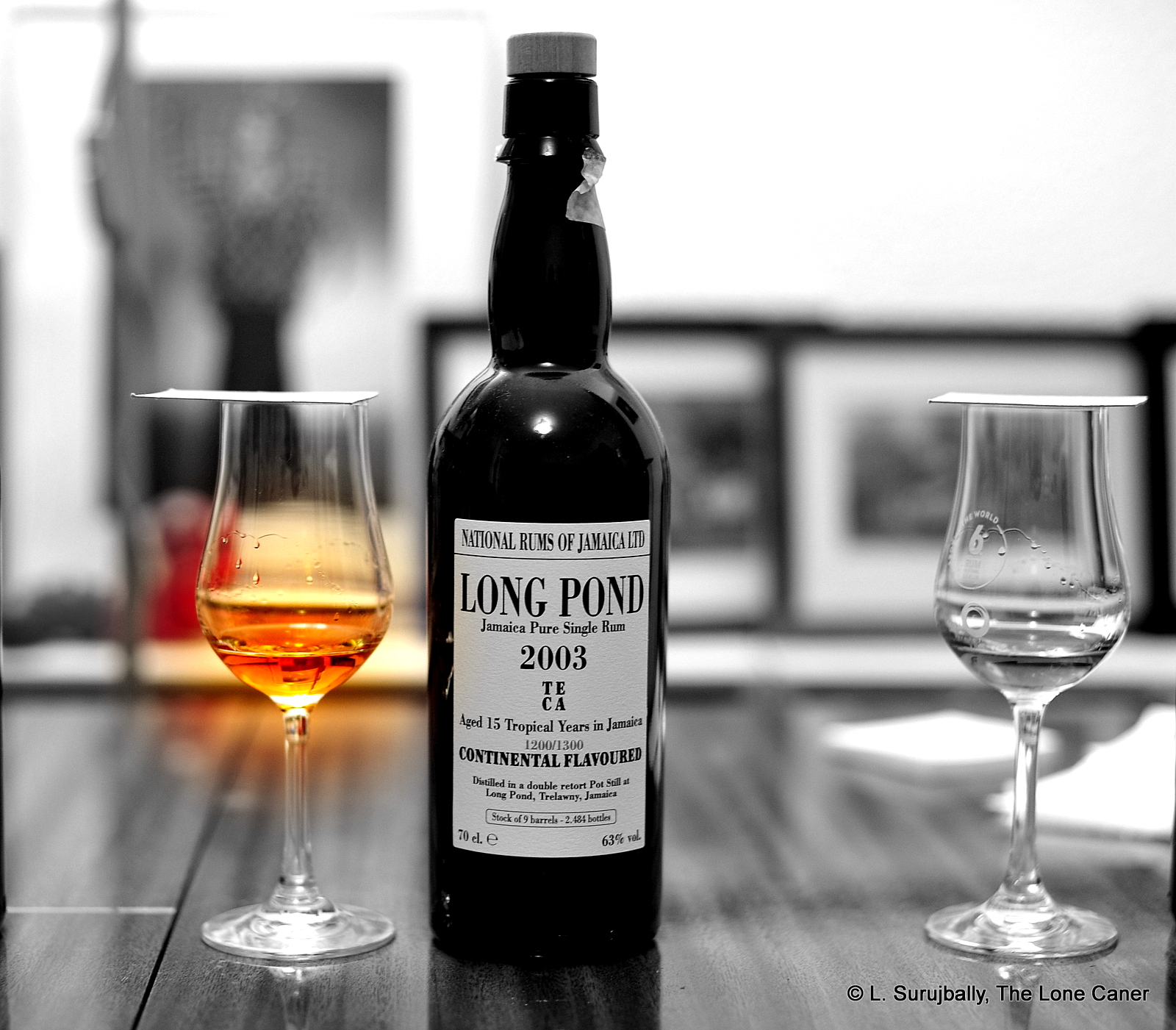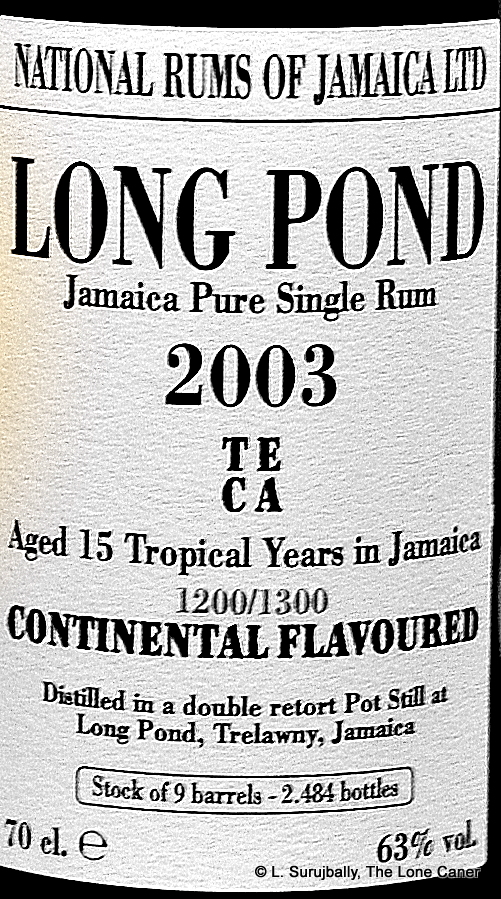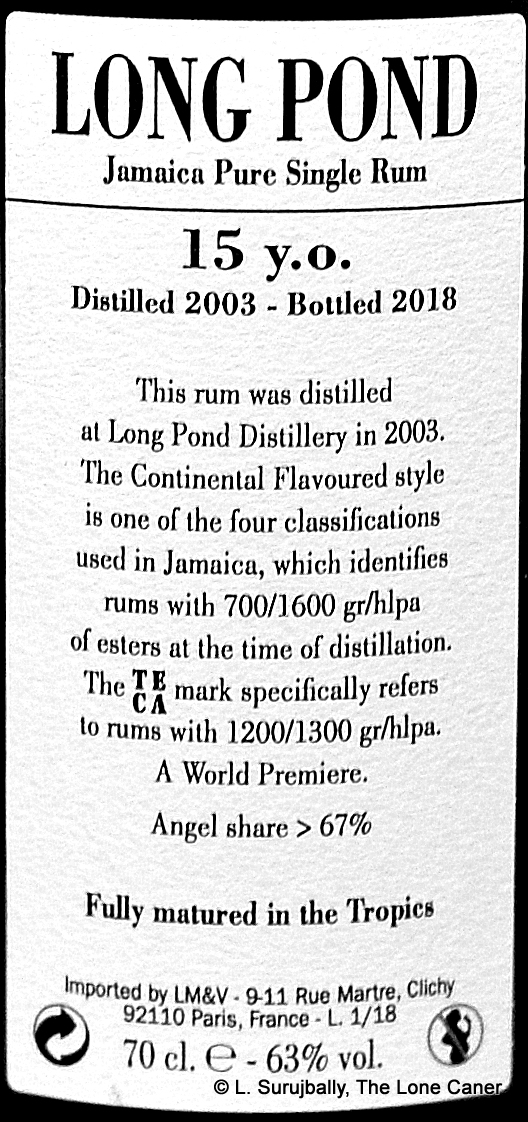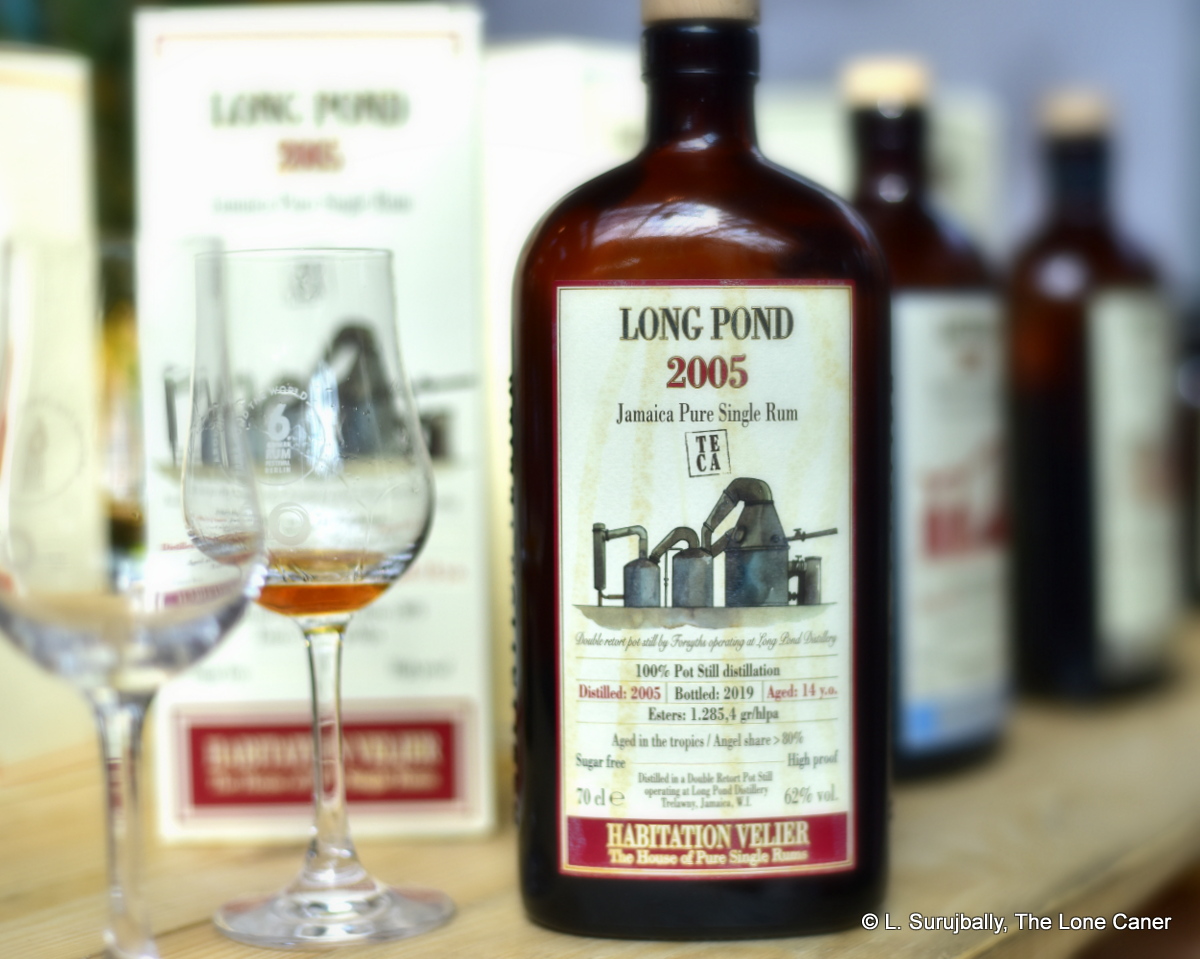
There are few people who tried the quartet of the Velier black-bottled Long Pond series that was released (or should that read “unleashed”?) in 2018, who didn’t have an opinion on the snarling beastie that was the 2003 NRJ TECA. That was a rank, reeking, sneering, foul-smelling animal of a rum, unwashed, uncouth, unafraid, and it blasted its way through each and every unwary palate on the planet. If Luca Gargano, the boss of Velier, wanted to provide a rum that would show what a high ester beefcake could do, and to educate us as to why it was never meant to be had on its own, he succeeded brilliantly with that one.
And yet a year later, he produced another pure single rum, also from the double retort pot still at Long Pond, also a TECA, a year younger and a percentage point weaker, with fourscore or so more gr/hlpa esters – and it blew the 2018 version out of the water. It was an amazing piece of work, better in almost every way (except perhaps for rumstink), and if one did not know better, just about a completely different rum altogether. Which makes it rather strange that it has not received more plaudits, or been mentioned more often (see “other notes”, below).
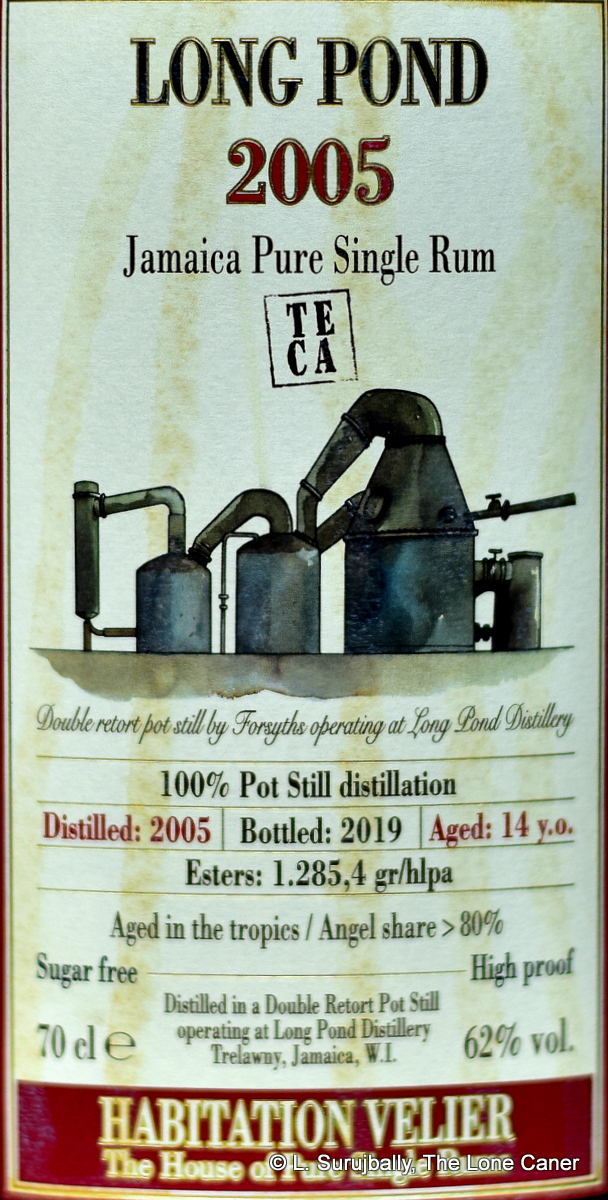 Let’s see if we can’t redress that somewhat. This is a Jamaican rum from Longpond, double pot still made, 62% ABV, 14 years old, and released as one of the pot still rums the Habitation Velier line is there to showcase. I will take it as a given it’s been completely tropically aged. Note of course, the ester figure of 1289.5 gr/hlpa, which is very close to the maximum (1600) allowed by Jamaican law. What we could expect from such a high number, then, is a rum sporting taste-chops of uncommon intensity and flavour, as rounded off by nearly a decade and a half of ageing – now, those statistics made the TECA 2018 detonate in your face and it’s arguable whether that’s a success, but here? … it worked. Swimmingly.
Let’s see if we can’t redress that somewhat. This is a Jamaican rum from Longpond, double pot still made, 62% ABV, 14 years old, and released as one of the pot still rums the Habitation Velier line is there to showcase. I will take it as a given it’s been completely tropically aged. Note of course, the ester figure of 1289.5 gr/hlpa, which is very close to the maximum (1600) allowed by Jamaican law. What we could expect from such a high number, then, is a rum sporting taste-chops of uncommon intensity and flavour, as rounded off by nearly a decade and a half of ageing – now, those statistics made the TECA 2018 detonate in your face and it’s arguable whether that’s a success, but here? … it worked. Swimmingly.
Nose first. Some of the lurking bog-monsters of the acetones, rubber and sulphur that defined the earlier version remained, but much more restrained – rubber, wax, brine, funk, plasticine, rotting fruits, pineapple, that kind of thing. What made it different was a sort of enhanced balance, a sweetness and thickness to the experience, which I really enjoyed. Much of the “wtf?” quality of its brother – the gaminess, the meatiness, the reek – was toned down or had disappeared, replaced by a much tastier series of fleshy, overripe fruit, pineapple and crushed almonds.
What distinguished the rum so much on the palate, I think, was the way that the very things I had shuddered at with the NRJ TECA were, when dialled down and better integrated, exactly what made this one so very good. The spoiling meat and hogo danced around the background, but never overwhelmed the solid notes of mint, thyme, rubber, nail polish, acetones and bags of molasses and caramel and ripe fruits. I particularly liked the way that the combination of ripe peaches and apricots versus the tart citrus-and-strawberry line stopped the whole “descent into madness” thing. This allowed the rum to be extreme, yes, but not overpoweringly so…sweeter and thicker and sharper and better than one would be led to expect with that ester count, like they had all agreed to a non-aggression pact. The finish – which seemed to want to hang around for a while to show off – was redolent of molasses, mint, fruits, ripe peaches, pineapples, lemon peel and a weird little whiff of green peas, and I enjoyed it quite a bit as well.
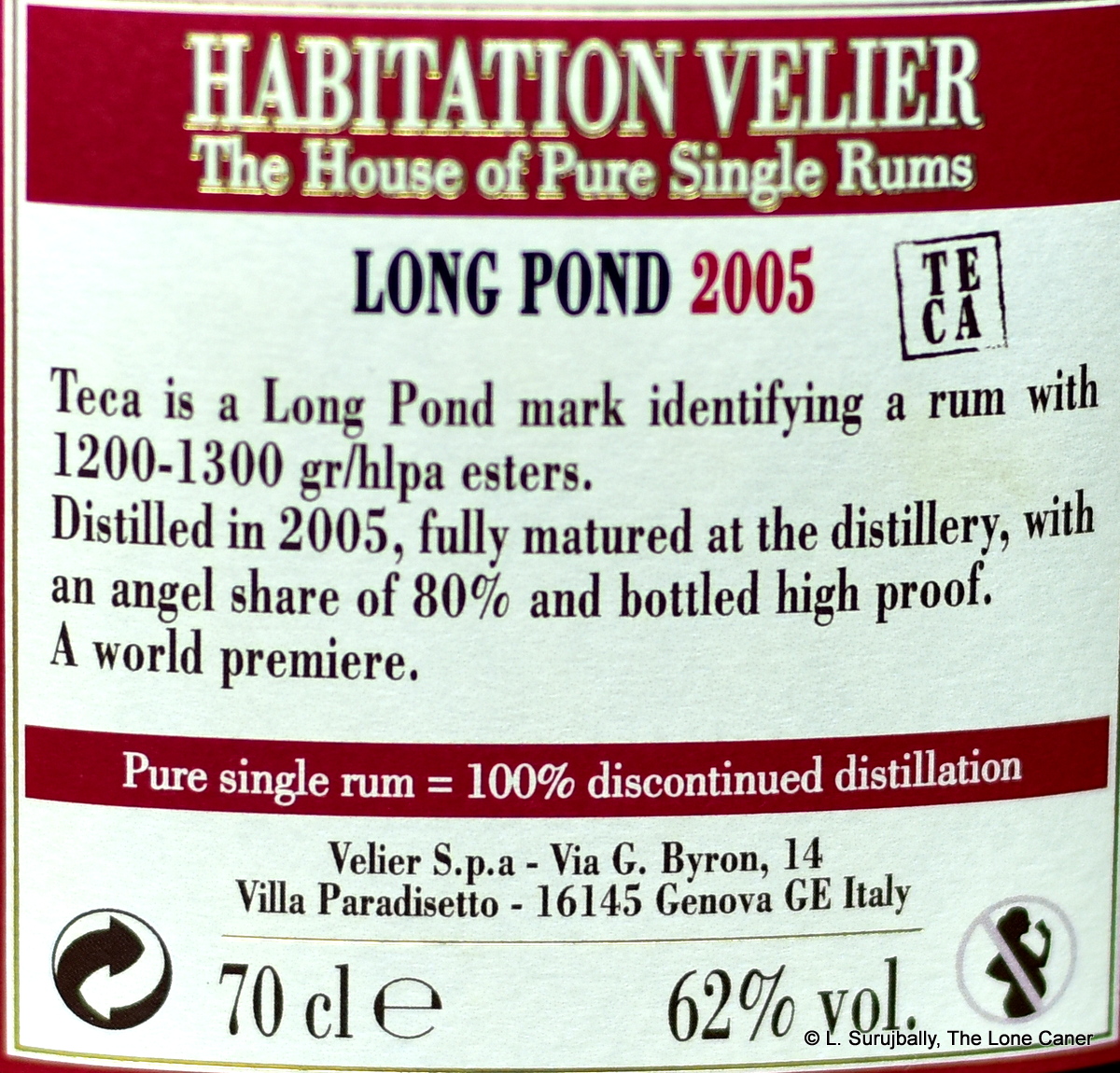 So – good or bad? Let’s see if we can sum this up. In short, I believe the 2005 TECA was a furious and outstanding rum on nearly every level. But that comes with caveats. “Fasten your seatbelt” remarked Serge Valentin in his 85 point review, and Christoph Harrer on the German Rum Club page wrote shakily (perhaps in awe) that “the smell is […] brutal and hit me like a bomb,” — which leads one to wonder what he might have made of the original TECA, but he had a point: you can’t treat it like a Zacapa or a Diplo…therein lies madness and trauma for sure. Even if you like your Jamaicans and boast of your experiences with fullproof Hampdens and Worthy Park rums, this was one to be approached — at that strength and with that ester count — with some caution.
So – good or bad? Let’s see if we can sum this up. In short, I believe the 2005 TECA was a furious and outstanding rum on nearly every level. But that comes with caveats. “Fasten your seatbelt” remarked Serge Valentin in his 85 point review, and Christoph Harrer on the German Rum Club page wrote shakily (perhaps in awe) that “the smell is […] brutal and hit me like a bomb,” — which leads one to wonder what he might have made of the original TECA, but he had a point: you can’t treat it like a Zacapa or a Diplo…therein lies madness and trauma for sure. Even if you like your Jamaicans and boast of your experiences with fullproof Hampdens and Worthy Park rums, this was one to be approached — at that strength and with that ester count — with some caution.
Perhaps it would take a few more nips and sips to appreciate it more fully. I tried it at the German rumfest in 2019, and while I knew right away that it was special and a true original, I wasn’t entirely sure what to make of it…and so filched a second sample to try more carefully, at leisure. Normally I walk around a rumfest with four glasses in my hand, but that day I kept one glass with this juice on the go for the entire afternoon, and returned the very next day to get another two. And the conclusion I came to, then and now, is that while at the beginning it has all the grace of a runaway D9, at the end, when the dust settles, all the disparate notes come together in a rhythm that somehow manages to elevate its initial brutality to a surprising, and very welcome, elegance.
(#735)(87/100)
Other Notes
Others have varying opinions on this rum, mostly on the plus side. Marius over at Single Cask Rum did the full comparison of the two TECA rums and came to similar conclusions as I did, scoring it 86 points. Le Blog a Roger was less positive and felt it was still too extreme for him and gave it 82. And our old Haiku-style-reviewer, Serge Valentin noted it as being “not easy” and “perhaps a tad too much” but liked it to the tune of 85 points.
